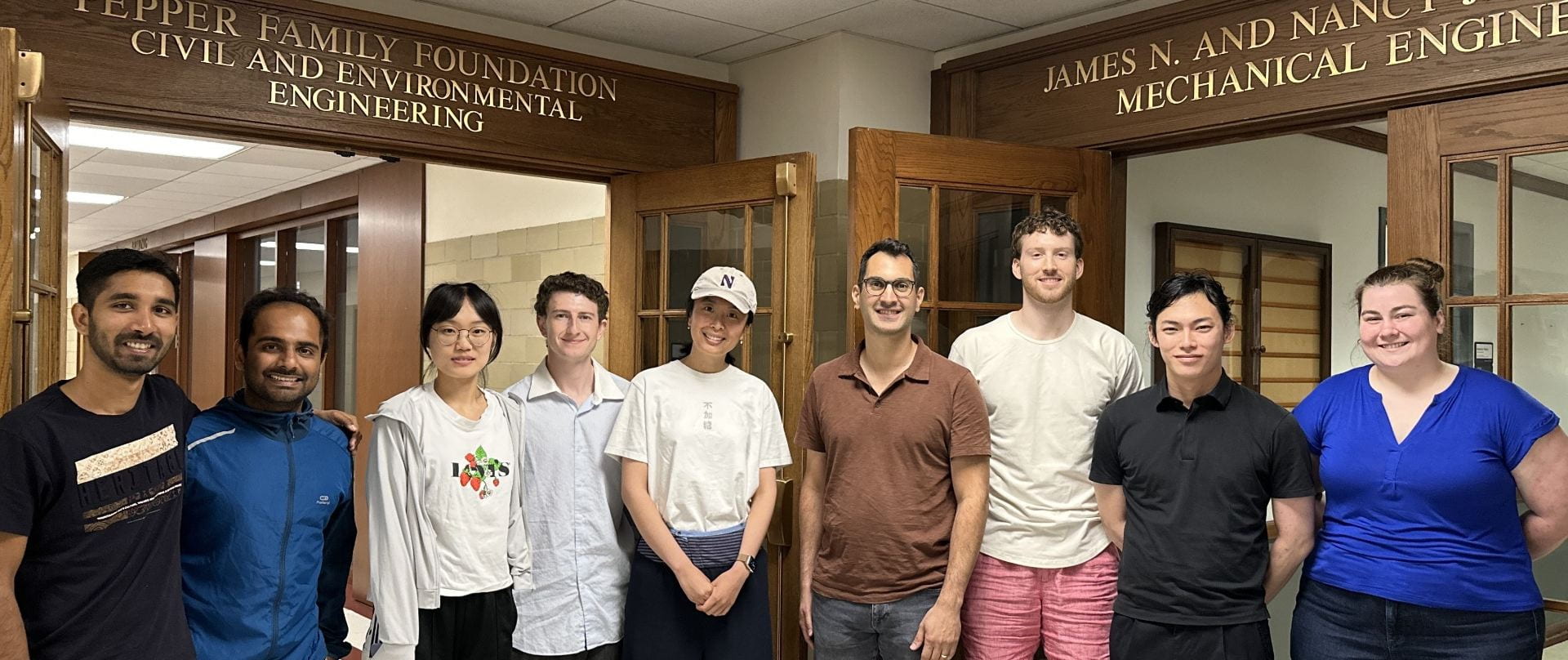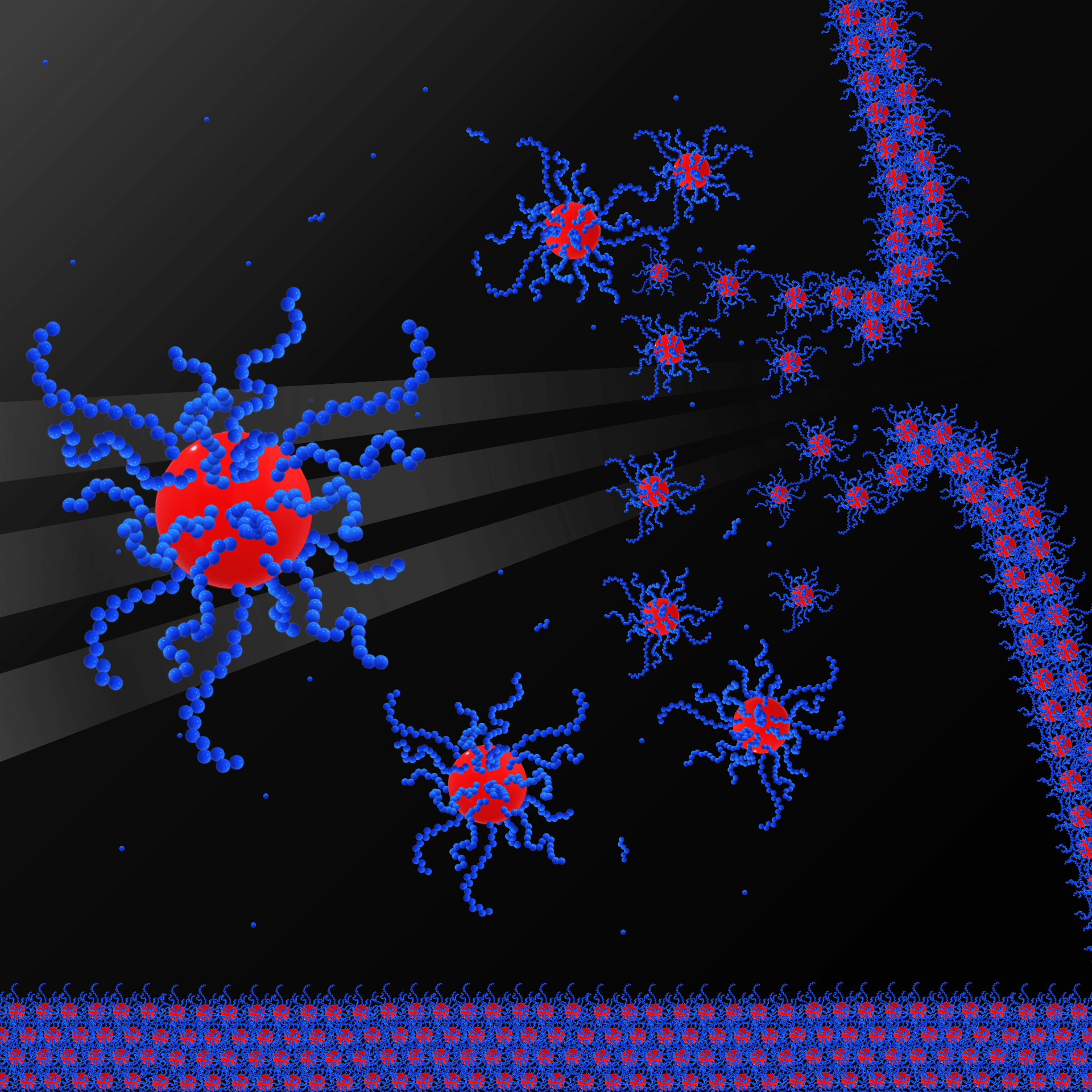Keten Research Group
Computational Nanodynamics Laboratory
Strong & Tough, Sustainable, Lightweight Materials
Biomaterials
Polymer Nanocomposites
Structures
Extreme Environments
- Overview
- Microbially Fabricated Protein-Based Materials
- Cellulose Nanocrystals and Nanocomposites
- Systematic Coarse-graining for Polymers and Nanocomposites
The long term research goal of our group is to gain fundamental insight into the mechanics and dynamics of biological, bioinspired, and polymeric systems at multiple-length scales, and reflect knowledge gained from our studies to the development of material design principles. Our investigations begin typically at the nano-scale, where key chemical information is encoded in the basic building blocks and interfaces of materials, giving rise to emergent features observable at the macro-scale. The main focus of our work is establishing “materials-by-design” approaches to utilizing these building blocks, such as proteins, synthetic polymers, biomimetic macromolecules to achieve new capabilities in engineering systems. We establish and use a broad set of tools based on theoretical mechanics and computational materials science (classical and reactive molecular dynamics, advanced sampling methods, systematic coarse-graining techniques) to tackle challenges pertaining to modeling molecular interactions at multiple length and time scales. Other topics of interest include modeling and simulation of bioinspired transport phenomena and mechanics of self-assembling material systems, with a particular focus on understanding how size and geometric effects influence the behavior of solids and fluids at the nano-scale. Discovery of size-dependent phenomena that may facilitate advancements in the design of functional nanostructures, structural/infrastructural materials, and nanotechnology products is central to our long-term research objective.
Our investigations thus far have helped to enable progress towards rapid discovery and design of bioinspired suprabiomolecular materials by establishing a knowledge base of their physical behavior relevant to applications beyond the biological milieu. Our work on self-assembly, mechanical behavior, and transport capabilities of polymer-peptide conjugates have paved the way for making nanoporous polymer thin films that have selective transport capabilities that mimic biological water and ion channels. These studies have shown that it is possible to control the hierarchical ordering of ring shaped peptides into tubes with tunable interior chemistry using simple mechanical forces, namely those arising from entropic elasticity of conjugated polymer chains. Vertically tunable pore chemistry then leads to unique transport capabilities that are challenging to achieve with polymers or carbon nanomaterials. Our investigations on microbially fabricated protein-based materials have explained mutation effects on sequence-property relationships in a range of protein-based materials, including functional amyloids such as curli nanofibers, bacterial gas vesicles, spider silk, titin and mussel-foot proteins.
Our work on cellulose nanocrystals and nanocomposites have revealed size and geometry dependent mechanical properties of nature’s most abundant structural biopolymer, ascertaining the importance of nanoscale multi phasic materials design as a core biological principle. Our prior work focused understanding how the blending ratio of longer tunicate and shorter wood nanocellulose into all-cellulose thin films influenced their structure and mechanical properties. These investigations informed the synthesis of chiral (Bouligand) structures with interesting photonic properties that depend on the self-assembly process. Impressively, these films that form are transparent and can have mechanical properties comparable to mineralized biomaterials such as bone. (Natarajan et al. Advanced Functional Materials, 2018). The Bouligand structure also confers superior impact resistance over aligned or orthogonally layered cellulosic films as illustrated by coarse-grained molecular dynamics simulations.
Our work on the mechanical behavior of thin films and nanocomposites has tackled the important problem of simulating interface and interphase behavior at extended length and time scales. A newly established scale bridging technique called energy renormalization ( Xia et al. Science Advances, 2019, Giuntoli et al. npj Computational Materials ,2021) developed for investigating polymer dynamics near surfaces with nanometer scale resolution has been instrumental in revealing mesoscale details that govern mechanical performance, while retaining crucial chemical details of specific polymers. Similar scale birding methods established for carbon nanomaterials are now being utilized to understand size-effects in bioinspired layer-by-layer composites arising from nanoconfinement. We are also extending our materials-by-design capabilities to composites beyond those that are inspired from nature, to explain surface and substrate effects in nano electronics, structural composites and coatings in the broader context of Integrated Computational Materials Engineering (ICME) and the Materials Genome Initiative (MGI). These tools have been instrumental in describing the mechanical behavior of polymers in extreme environments such as high-strain rate impact.

Recent Publications
- Pandey, A., Chen, W., & Keten, S. (2025). COLOR: A compositional linear operation-based representation of protein sequences for identification of monomer contributions to properties. arXiv preprint arXiv:2501.06371.
- Moussavi, A., Marshall, W., Kumar, S. K., & Keten, S. (2025). Two Channel Description of Gas Permeability in Polymer-Grafted Nanoparticle Membranes. Macromolecules.
- Yang, X., Leng, J., Sun, C., & Keten, S. (2025). Highly Ordered 2D Open Lattices Through Self‐Assembly of Magnetic Units. Advanced Functional Materials, 35(2), 2412326.
- Pandey, A., Chen, W., & Keten, S. (2024). Sequence-based data-constrained deep learning framework to predict spider dragline mechanical properties. Communications Materials, 5(1), 83.
- Moussavi, A., Pal, S., Wu, Z., & Keten, S. (2024). Characterizing the shear response of polymer-grafted nanoparticles. The Journal of Chemical Physics, 160(13).
- Gurel, U., Keten, S., & Giuntoli, A. (2024). Bidispersity improves the toughness and impact resistance of star-polymer thin films. ACS Macro Letters, 13(3), 302-307.
- Pal, S., & Keten, S. (2024). Micro-ballistic response of thin film polymer grafted nanoparticle monolayers. Soft Matter, 20(39), 7926-7935.




